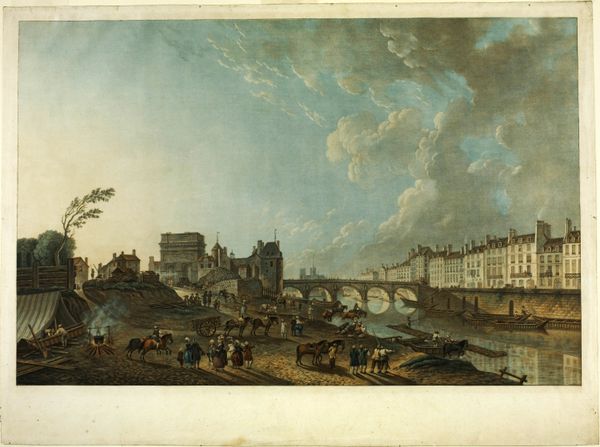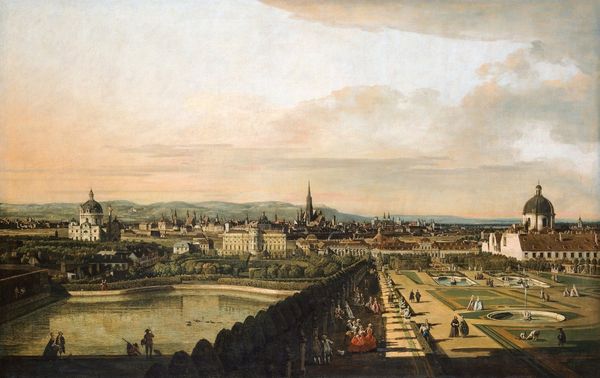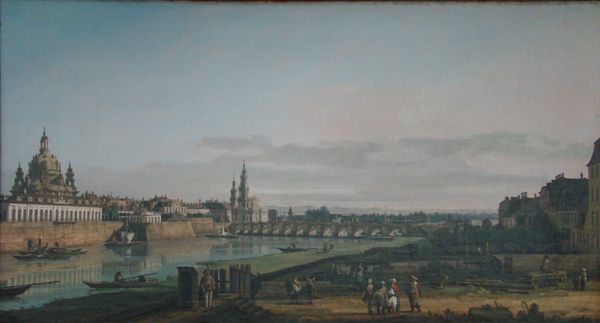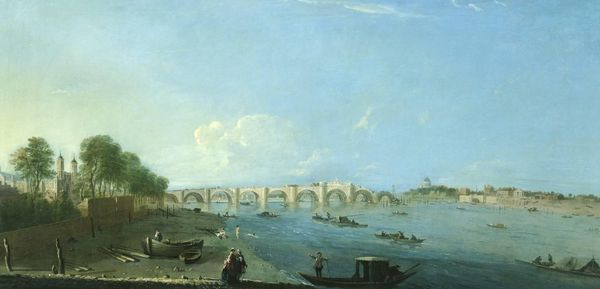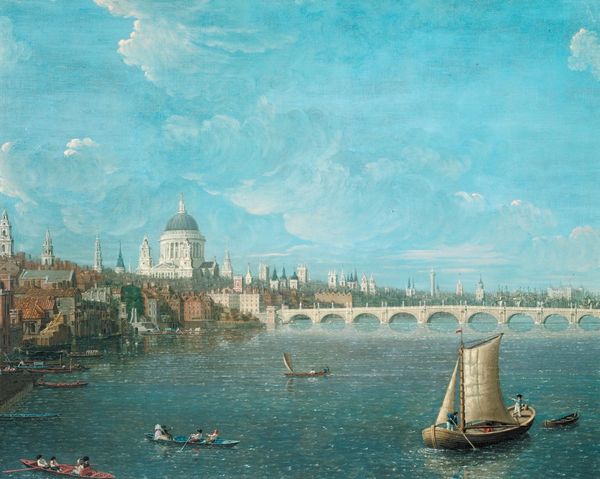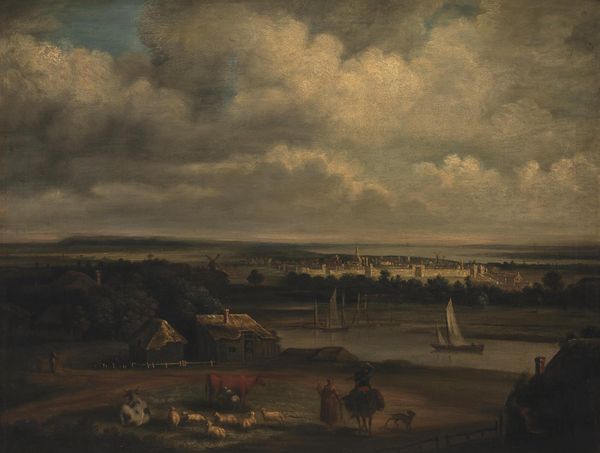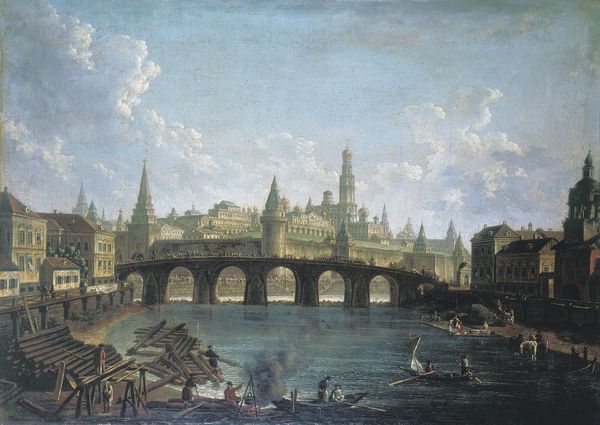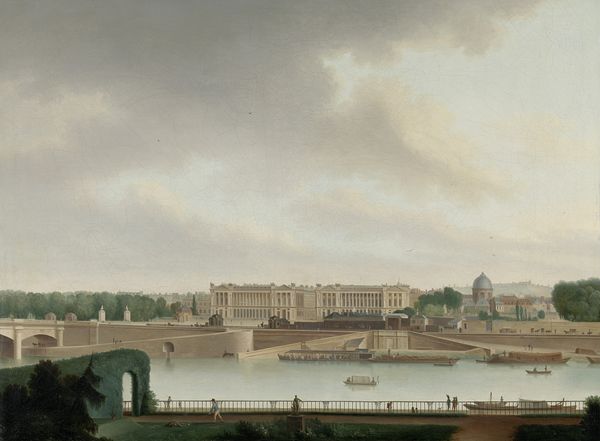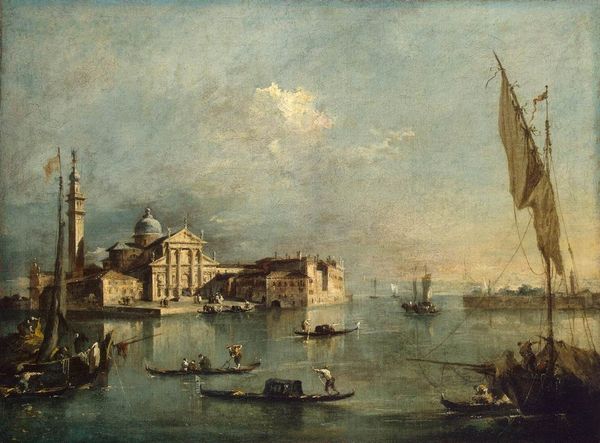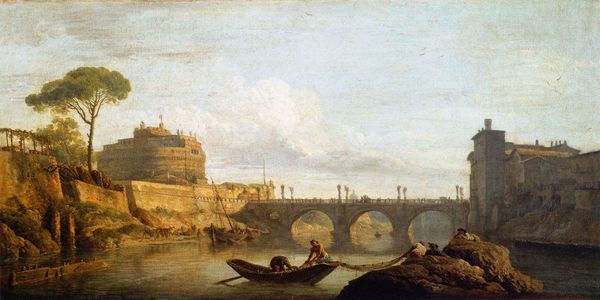
painting, oil-paint
#
baroque
#
painting
#
oil-paint
#
landscape
#
river
#
perspective
#
cityscape
#
genre-painting
Dimensions: 132 x 236 cm
Copyright: Public domain
Editor: Here we have Bernardo Bellotto's "Dresden from the Right Bank of the Elbe, above the Augustusbrücke," painted in 1747 using oil on canvas. What strikes me is the sheer amount of detail – it feels almost photographic, yet so deliberately composed. How do you interpret this kind of precise rendering within its historical context? Curator: It's tempting to see it as simply a record, but Bellotto’s "Dresden" speaks volumes about the ambitions of the Saxon court and the burghers of Dresden at the time. The painting serves almost as propaganda, emphasizing the city's prosperity and stability. It's not just a neutral landscape; it’s a carefully constructed image intended to project power and sophistication. Notice how the architecture dominates, overshadowing the everyday people? What might that signify? Editor: That makes sense! The people seem almost incidental, part of the scenery rather than the focus. So the painting isn't just *of* Dresden, it’s *about* Dresden's socio-political structure? Curator: Precisely! Bellotto’s style, highly detailed and perspectivally accurate, aligns with the Enlightenment’s emphasis on reason and order. The ruling class used images like these to legitimise their power, connecting it with progress and enlightened values. We should also consider the patronage system – these works were commissioned, directly influencing their content and message. Editor: So the artwork acted as a sort of visual communication. It really puts a different lens on how I look at cityscapes of this era. It's no longer just a pretty picture. Curator: Exactly. Examining the social and political underpinnings reveals layers of meaning often missed in purely aesthetic appreciation. Editor: I never thought of it that way before. Thanks! Curator: My pleasure! There's always more than meets the eye with these historic works.
Comments
No comments
Be the first to comment and join the conversation on the ultimate creative platform.

